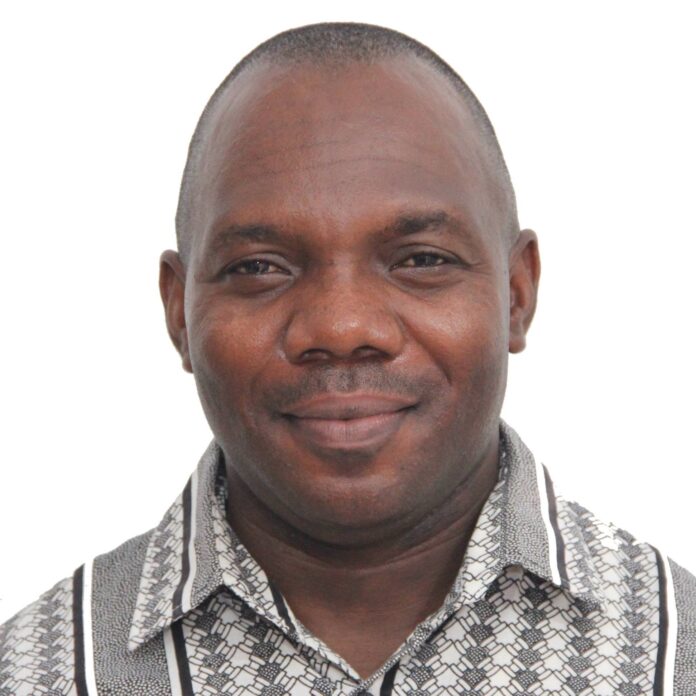“Despite the good intentions behind current evaluation systems, the exam bodies exhibit significant shortcomings that impede student success. A common challenge is that students frequently feel pressured to sit for both WAEC and NECO exams, mainly due to uncertainty over which will be accepted by universities or recognized for certification. This ambiguity confuses students due to overlapping syllabi and exam schedules. The interconnectedness of various examinations creates uncertainties for students navigating the admission process. Thus, students often find it challenging to grasp the unique advantages of each examination and how these qualifications contribute to securing a place at their desired institution.”
Nigeria’s education system has long been marked by a complex array of examinations that students must navigate throughout their academic journeys. From the West African Senior School Certificate Examination (WASSCE) to the Unified Tertiary Matriculation Examination (UTME) and National Examinations Council (NECO) assessments, students are confronted with multiple standardized tests that significantly influence their academic futures. Each examination has its own specific requirements and criteria, often confusing and stressing students. Critics contend that the excessive number of examinations not only places immense pressure on students but also cultivates a culture of rote learning rather than encouraging critical thinking and problem-solving abilities. The question is: What are Nigeria’s major national examination bodies, and how do their roles intersect? Are the various forms of evaluation currently implemented effectively addressing the needs of learners, or are they exacerbating their challenges and failures?
Nigeria’s educational landscape is intricate and diverse, featuring various examination bodies evaluating student performance across different academic levels. The West African Examination Council (WAEC), established in 1952, is among the most prominent organizations. WAEC administers the West African Senior School Certificate Examination (WASSCE), a critical assessment for final-year secondary school students. This examination significantly determines students’ eligibility for university admission, solidifying WAEC’s status as one of Nigeria’s most recognized examination bodies. However, WAEC does not operate in isolation. It collaborates with the National Examinations Council (NECO), which was established in 1999 as an independent authority in Nigeria to enhance the educational assessment framework within the country. NECO’s primary responsibilities include administering the Senior Secondary Certificate Examination (SSCE) and the Junior Secondary Certificate Examination (JSCE). The NECO is an alternative to the WAEC examination, leading to redundancy and duplication in the examination process. As a result, many students find themselves in the difficult position of choosing between the NECO and WAEC examinations, while others opt to take both to strengthen their academic credentials. This situation places additional pressure on students as they prepare for two major examinations that assess similar competencies within a short period.
The Joint Admissions and Matriculation Board (JAMB) was established in 1978 to oversee the admission process into tertiary institutions across Nigeria. One of its primary responsibilities is conducting the Unified Tertiary Matriculation Examination (UTME), a standardized test designed to assess the knowledge and readiness of candidates seeking admission into universities, polytechnics, and colleges of education in the country. JAMB collaborates with other examination bodies, such as the West African Examinations Council (WAEC) and the National Examinations Council (NECO). These partnerships allow JAMB to utilize WAEC and NECO results to determine eligibility for admission into various tertiary institutions. Through this comprehensive assessment framework, JAMB ensures a systematic and fair approach to admissions. Candidates must achieve specific score thresholds in the UTME and their WAEC or NECO results to qualify for consideration by their preferred institutions. This interconnected evaluation process is designed to maintain high academic standards and provide a level playing field for prospective students across Nigeria. The National Business and Technical Examinations Board (NABTEB) was established in 1992 to conduct standardized examinations across various educational fields, particularly emphasizing technical, vocational, and business disciplines. NABTEB oversees two significant examinations: the National Business Certificate (NBC) and the National Technical Certificate (NTC). These certifications are essential for students aiming to build careers in technical and vocational sectors, providing them with the skills and knowledge necessary for success. Despite its specialized focus, NABTEB’s examination offerings frequently overlap with those offered by the National Examinations Council (NECO) and the West African Examinations Council (WAEC). This overlap is particularly noticeable in schools that serve both academic and technical streams, resulting in a dual certification system that can sometimes confuse students and educators. While the existence of multiple examination boards contributes to a well-rounded education system, it also raises concerns regarding the distinct roles and recognition of each board’s qualifications in both the job market and higher education.
Despite the good intentions behind current evaluation systems, the exam bodies exhibit significant shortcomings that impede student success. A common challenge is that students frequently feel pressured to sit for both WAEC and NECO exams, mainly due to uncertainty over which will be accepted by universities or recognized for certification. This ambiguity confuses students due to overlapping syllabi and exam schedules. The interconnectedness of various examinations creates uncertainties for students navigating the admission process. Thus, students often find it challenging to grasp the unique advantages of each examination and how these qualifications contribute to securing a place at their desired institution. The immense pressure to succeed and secure admission into competitive programs leads many students to engage in unethical practices, commonly called malpractice. This behavior often takes various forms, including cheating, plagiarism, and seeking unauthorized assistance to ensure they pass the crucial examinations necessary for admission. As a result, the focus on attaining high scores overshadows the significance of genuine learning and comprehension of the material, ultimately steering students toward a potentially harmful path.
Many countries worldwide have shifted away from traditional test-based examinations as the sole or primary method for university admissions. Instead, these nations are embracing more holistic and continuous assessment approaches considering a broader spectrum of student capabilities and achievements. Notable examples include Finland, Sweden, Canada, the Netherlands, New Zealand, Germany, Australia, the United Kingdom, and the United States. Each of these nations is acknowledged for its dedication to improving the quality and accessibility of education. Finland has garnered recognition for its distinctive higher education admissions process, contrasting traditional methods. Unlike many other countries that rely on standardized national entrance examinations for university admissions, Finland adopts a more holistic approach. For most university programs, admission decisions are primarily based on students’ overall performance throughout their high school years. This includes their academic grades and results from matriculation exams, which assess their proficiency across various subjects. This focus on comprehensive scholarly achievement instead of a single test score embodies Finland’s educational philosophy, prioritizing individual learning and fostering a more equitable system for all students. Finnish universities also require interviews or portfolio submissions for specific specialized programs, enabling students to demonstrate their creativity, skills, and unique experiences. This comprehensive approach emphasizes equity, creativity, and student well-being, fostering an environment that values and appreciates diverse talents and educational backgrounds.
In the United States, several prominent institutions have adopted test-optional or test-blind admissions policies, reflecting a growing trend to foster a more equitable admissions process considering diverse student achievements and experiences. Noteworthy examples include the University of California and California State University, which have implemented test-optional policies that allow students to choose whether to submit SAT or ACT scores with their applications. Additionally, institutions like Reed University and Hampshire College have embraced these changes, acknowledging that standardized test scores do not always accurately represent a student’s potential for success in higher education. Other prestigious universities that adopted this trend include Harvard University, Yale University, Stanford University, Princeton University, and Brown University. They have substantially changed their admissions processes, permitting prospective students to submit standardized test scores voluntarily without penalizing those who choose not to include them. The University of Chicago was one of the first renowned institutions to implement a test-optional policy in 2018, setting a precedent for others to follow. Furthermore, New York University (NYU), Columbia University, and Boston University have adopted permanent test-optional policies. This shift signifies an increasing awareness of the limitations and biases inherent in standardized testing. These reforms arise from concerns that the SAT and ACT exams do not accurately reflect a student’s capabilities.
During my years of living and studying in the United States, I observed a notable trend in the admissions processes of various educational institutions. Many schools did not require the Graduate Record Examination (GRE) as admission criteria. Instead, they adopted a more holistic approach to evaluating prospective students. Most school’s evaluation processes focus on several key components. A student’s academic performance was primarily assessed through their Grade Point Average (GPA), which clearly indicated their educational achievements and capabilities over time. In addition to GPA, personal essays were pivotal in the admissions process. These essays let applicants express their passions, interests, and aspirations narratively, offering insights into their personalities and motivations that numbers alone could not convey. Admissions committees often sought authentic and compelling stories showcasing self-reflection and the capacity to set and pursue meaningful goals. Additionally, letters of recommendation were considered a vital component of the application. Typically written by teachers, mentors, or employers, these letters offered valuable perspectives on the applicant’s character, work ethic, and achievements. They endorsed the candidates’ potential for success, emphasizing their strengths and contributions in both academic and extracurricular contexts. The involvement of students in extracurricular activities was also considered. Participation in clubs, sports, volunteer initiatives, or other forms of community engagement reflects a well-rounded individual who actively contributes to society and possesses skills beyond the classroom. This holistic admissions strategy aims to foster a more nuanced and comprehensive understanding of applicants, ensuring that decisions are based on various factors. Such an approach acknowledges that success in a collegiate environment is influenced by more than just test scores; it embodies a student’s potential to thrive and make meaningful contributions to the academic community.
In Nigeria, the situation regarding educational assessments is markedly different. The examination board continues to utilize an antiquated evaluation system that does not align with contemporary educational standards or students’ evolving needs. For example, students must complete several standardized exams throughout their educational journey. They begin with the Common Entrance Exam to gain admission to Secondary schools, followed by the Junior WAEC to advance to Senior Secondary classes. Finally, they take either WAEC or NECO to graduate from secondary school. After this, students must take another standardized test to qualify for university admission. In some institutions, even after taking the JAMB exam, students must pass additional university-administered examinations for final admission. This cumbersome methodology not only undermines the validity of the assessments but also fails to accurately measure students’ skills and knowledge in a rapidly changing world. The most effective measures of a student’s intelligence and learning are the class assessments and end-of-term exams conducted within the school. Ideally, a student should not reach the stage of taking WAEC or JAMB if they have not been performing adequately in school-administered tests. Waiting until WAEC or JAMB to evaluate a student’s readiness for university is a misallocation of time and resources; by then, it is simply too late.
The question is: What policy changes can we recommend to enhance Nigeria’s examination and assessment framework? There are compelling arguments in favor of merging or harmonizing these entities. Firstly, such an approach could promote greater efficiency and cost savings. The existence of multiple independent examination bodies has created redundancies that place a strain on resources. For example, this year’s JAMB exams posed significant challenges for many students, particularly in printing their examination slips before heading to their designated centers, which hindered their ability to participate in the tests. Additionally, there were concerning reports about the malfunctioning biometric machines, which inaccurately captured candidates’ thumbprints. A total of 379,997 candidates were impacted by human error and technological failures during the recently concluded 2025 UMTE examination. These technical issues not only frustrated students but also raised serious concerns regarding the integrity of the examination process. The question now is: Should the government consider merging or harmonizing some of these examination bodies? A harmonized examination system would foster standardization across the board. Harmonization is essential, as it ensures that assessments remain consistent and comparable nationwide, thereby enhancing the reliability of the results. A unified framework would not only streamline the assessment process but also improve monitoring, evaluation, and quality assurance. Additionally, it would ease the academic burden on students who often prepare for multiple examinations.
However, merging or harmonizing these examination bodies must be approached with caution. Organizations such as the West African Examinations Council (WAEC), the National Examination Council (NECO), and the National Business and Technical Examinations Board (NABTEB) have developed established bureaucracies and have vested interests that may resist such changes. Furthermore, if not executed with care, these mergers could unintentionally provoke ethnic or political tensions. For instance, if one region is perceived to benefit disproportionately from the new arrangements, it could result in discontent and unrest. Furthermore, a single examination body may become overwhelmed by the increased responsibilities associated with unification. Without appropriate adjustments to management, staffing, and infrastructure, the quality of examinations and assessments may decline, undermining any potential advantages of the merger. In conclusion, while the merger of examination bodies in Nigeria offers an opportunity to improve the examination and assessment framework, it demands careful consideration and strategic planning to navigate the associated complexities. The government should engage in comprehensive stakeholder consultations and develop a clear implementation roadmap to ensure that the proposed changes are both equitable and effective.
The recent incident in which the JAMB registrar became visibly emotional and shed tears during a press conference—while candidly acknowledging the irregularities reported during the 2025 Unified Tertiary Matriculation Examination (UTME)—has raised serious concerns about the integrity and fairness of the admissions system. Many observers took to social media to voice their opinions, emphasizing the urgent need for reforms to ensure all candidates have an equitable opportunity to pursue higher education. They argue that the registrar’s emotional display is only a small reflection of a much larger issue affecting the educational landscape in Nigeria. JAMB embodies the broader inefficiencies and disarray within the government’s management of academic assessments and admissions. The current practice of subjecting Nigerian students to excessive examinations highlights a bureaucratic redundancy that is frustrating and counterproductive. This situation echoes developments within law enforcement, where the government initially operated with a single police force but later established additional agencies such as the National Civil Defense Corps, the Federal Road Safety Corps, and Vehicle Inspection Officers. Each of these entities often halts vehicles on the road, frequently requesting the same documentation and information, thus leading to frustration and confusion among the citizens they are meant to serve. This duplication pattern extends beyond education and law enforcement, infiltrating the very core of government operations. For instance, while the Ministry of Information is responsible for disseminating government communications, it operates concurrently with the National Orientation Agency (NOA). Additionally, there are numerous agencies with overlapping mandates, such as the Economic and Financial Crimes Commission (EFCC), the Independent Corrupt Practices and Other Related Offences Commission (ICPC), the National Agency for the Prohibition of Trafficking in Persons (NAPTIP), and the Human Trafficking Unit of the Nigeria Police Force. Additionally, the National Emergency Management Agency (NEMA) and State Emergency Management Agencies (SEMA), as well as the National Information Technology Development Agency (NITDA) and the Nigerian Communications Commission (NCC), often exhibit similar functions. This redundancy leads to inefficiency and confusion. Moreover, it is common for elected officials to appoint multiple media aides, personal assistants, and special advisers, resulting in overlapping responsibilities that further complicate the flow of information.
The issue of multiple examination boards in Nigeria highlights a deeper systemic challenge within the government’s educational framework. Rather than pursuing a unified strategy to streamline and harmonize the various examination bodies, we often find ourselves caught in a complex web of fragmentation and duplicity. This multiplicity not only complicates the examination process but also imposes an undue burden on students and citizens alike. Students must navigate a convoluted landscape where different boards establish varying standards, curricula, and examination practices. As a result, they experience significant psychological stress, mainly since failure in one or more of these assessments can postpone their educational progress by a year or more. This challenge is further intensified for students in rural or underserved communities, where access to quality educational resources, adequate infrastructure, and qualified teaching staff is frequently limited. Moreover, the transition to Computer-Based Testing (CBT) implemented by JAMB has exacerbated the existing digital divide, placing students who are not technologically adept at a considerable disadvantage. Compounding these issues, exam malpractice often goes unchecked due to insufficient supervision and inadequately funded invigilators. This undermines the integrity of examination results and raises concerns about the competencies of graduates entering the workforce, ultimately eroding public trust in the educational system.
Therefore, to effectively enhance Nigeria’s examination and assessment framework, comprehensive policy reforms are essential. These reforms should involve a detailed analysis of the systemic inefficiencies affecting educational assessment processes. Thus, we must identify and eliminate unnecessary redundancies in assessments, as these can create confusion and impose undue stress on students and educators. A key recommendation is the establishment of a National Unified Examination Policy. This policy would provide a comprehensive framework to synchronize the curricula, assessment formats, and evaluative standards across the primary examination bodies, including the West African Examinations Council (WAEC), the National Examinations Council (NECO), and the National Business and Technical Examinations Board (NABTEB). By standardizing these components, the policy aims to minimize discrepancies and ensure consistency in educational outcomes nationwide. This alignment would also ease the burdens on students as they navigate multiple examinations with varying standards and formats.
Alongside this harmonization, the government should prioritize the implementation of continuous assessment frameworks that would significantly enhance final certification processes. By shifting the emphasis from high-stakes, one-time exams to ongoing evaluations, students would be motivated to engage in meaningful learning rather than rote memorization. Alongside the pursuit of harmonizing educational standards, the government must emphasize the development and implementation of continuous assessment frameworks. These frameworks are essential for refining the final certification processes for students. We can cultivate an environment that promotes deeper engagement and meaningful learning by shifting the focus from high-stakes, one-time examinations to ongoing evaluations throughout the academic year. This shift would not only alleviate the stress associated with a single exam but also foster greater retention and application of knowledge, moving away from reliance on rote memorization. Continuous assessments could encompass a variety of formats, such as projects, presentations, peer reviews, and periodic quizzes, all aimed at evaluating students’ understanding and skills more holistically. Ultimately, this approach would better equip students for real-world challenges by encouraging critical thinking, collaboration, and a genuine passion for learning.
Rev. Ma, S. J., is a Jesuit Catholic priest of the North West Africa Province of the Society of Jesus. He currently writes from the Guardian Angel Catholic Police Chapel Lugbe, Abuja, Nigeria.







